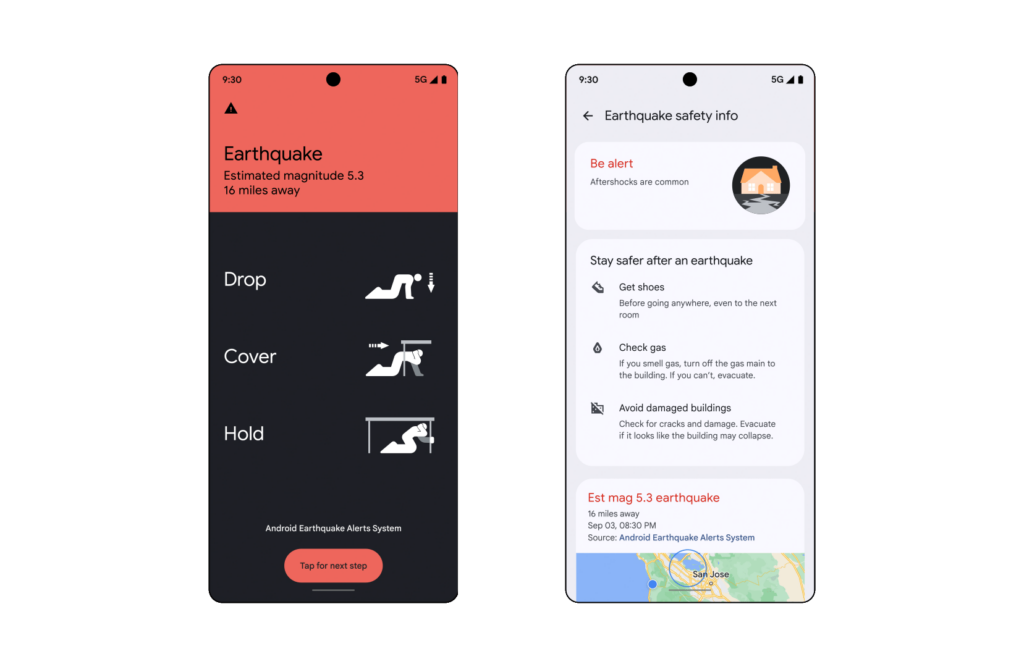
Google has officially released Android 15, making it available initially through the Android Open Source Project for developers. This latest version of the mobile operating system introduces various enhancements, focusing on accessibility, music recognition, and safety features.
Pixel phone users are expected to receive the update in the coming weeks, while users of compatible devices from Samsung, Motorola, OnePlus, Nothing, and other brands will need to wait a few more months.
Unlike Apple, which typically links significant changes directly to new iOS versions, Google’s updates often concentrate on refining the interaction between apps and devices. With Android 15, new features include single-tap passkeys, theft detection, and enhanced multitasking capabilities for large-screen devices. Additionally, users will be able to limit access to specific apps.
TalkBack Updates Bring Enhanced Audio Descriptions
One of the key accessibility features launched with Android 15 is an updated version of the “TalkBack” screen reader. First showcased at Google’s I/O event earlier this year, TalkBack now integrates with Google’s Gemini AI assistant to deliver detailed audio descriptions of images viewed on smartphones.
This update is aimed at helping users who are blind or have low vision by providing verbal descriptions of various types of images, such as those in the camera roll, online shopping sites, or text messages.

Circle to Search Expands with Music Recognition
Another notable feature is the expansion of the “Circle to Search” function, which now includes a Shazam-like capability for music recognition.
After weeks of testing, users can identify songs by selecting a new music button, which will display the song’s name, artist, and related YouTube video. This feature can recognize music playing directly from a video on the device or from external sources like grocery store speakers.
Earthquake Alert System Extends Nationwide
Android’s earthquake alert system is also being expanded to offer broader coverage. Initially available in California, Oregon, and Washington through a partnership with the United States Geological Survey (USGS) and its ShakeAlert system, Google is now rolling out this feature to all U.S. states and six territories. In regions without traditional seismometer-based monitoring, Android devices themselves will serve as earthquake detectors.
The system uses accelerometers in smartphones to detect vibrations, and if multiple devices in an area register tremors, Google’s Earthquake Alerts will analyze the crowdsourced data to determine the occurrence of an earthquake. This feature is already available in nearly 100 countries worldwide.

Chrome and Wear OS Gain New Functionalities
Other updates that come with Android 15 include a new “Listen to this page” feature in the Chrome browser, which allows users to have web pages read aloud to them. This feature supports several languages, including English, French, German, Arabic, Hindi, and Spanish, and is designed for individuals who are blind, have learning disabilities, or prefer listening to reading. Users can pause, rewind, and fast forward the reading, adjust the speed, and select the language and type of voice.
Wear OS 5 also benefits from Android 15, with the introduction of offline Google Maps support, making it easier for smartwatch users to navigate without needing a phone. Additionally, new shortcuts have been added to Wear OS, enabling users to search for destinations via voice commands or quickly check their current location by tapping the watch face.
These features demonstrate Google’s focus on enhancing user experience, accessibility, and safety across its devices with the latest Android 15 update, which will continue to roll out to more devices over the coming months.
Featured Image courtesy of SOPA Images/LightRocket via Getty Images
Follow us for more tech news updates.
